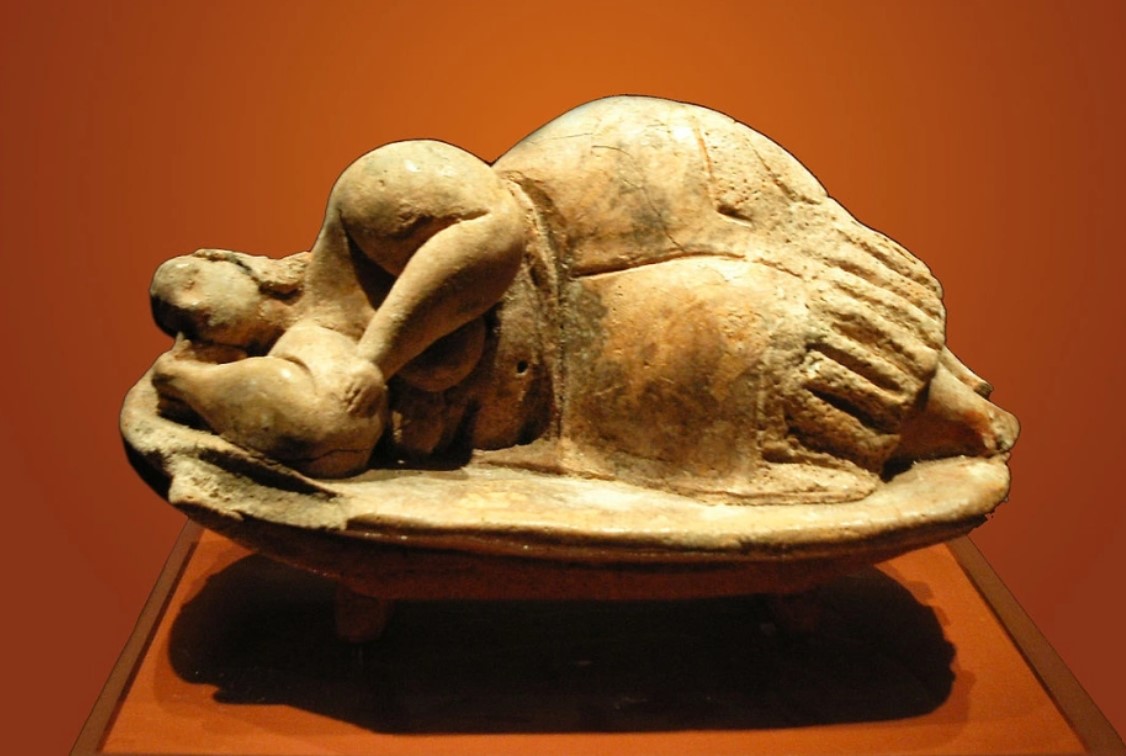The Sleeping Lady is an extraordinary clay figurine dating from 3600–2400 BC. Unearthed in the Hypogeum of Ħal Saflieni, Malta, this well-preserved artifact offers fascinating insights into the spiritual and cultural practices of prehistoric Mediterranean societies. You can learn more about ancient cultures at archeology.dulichvn.net
The Discovery of the Sleeping Lady
The journey of uncovering the Sleeping Lady has revealed a wealth of historical and cultural insights.

1. Location of the Find
The figurine was discovered in one of the underground chambers of the Hypogeum of Ħal Saflieni, a UNESCO World Heritage site. This ancient subterranean complex, located in Malta, is believed to have served as both a burial ground and a ceremonial site.
2. Archaeological Context
The figurine was found amidst other artifacts such as pottery, tools, and bones, all pointing to its ritualistic significance. It is considered one of the most iconic pieces representing Malta’s Neolithic period.
3. Condition of the Artifact
The Sleeping Lady remains remarkably intact, with traces of red ochre paint still visible on its surface. This level of preservation provides valuable insights into the artistic techniques and spiritual beliefs of the era.
The Design and Symbolism of the Sleeping Lady
The figurine’s design and posture reveal much about its symbolic meaning and cultural importance

.
1. Serene Reclining Pose
The figurine depicts a woman lying in a tranquil, reclining position, which has been interpreted as representing either sleep or eternal rest. This pose conveys a sense of peace and possibly a connection to the afterlife.
2. Representation of the Mother Goddess
The Sleeping Lady is widely believed to symbolize a “mother goddess,” a recurring motif in prehistoric art. This figure is associated with fertility, life, and nurturing — themes central to the spiritual beliefs of ancient Mediterranean societies.
3. Artistic and Cultural Significance
The intricate details and craftsmanship of the figurine highlight the artistic sophistication of the era. It also reflects the societal reverence for female deities, emphasizing their role in creation and sustenance.
The Cultural Importance of the Sleeping Lady
The Sleeping Lady is more than just an artifact; it is a window into the lives and beliefs of prehistoric Malta.

1. Insights into Neolithic Life
Artifacts like the Sleeping Lady help archaeologists understand the daily lives, rituals, and social structures of Malta’s ancient inhabitants. The figurine serves as a testament to their spiritual and artistic endeavors.
2. Symbol of Spiritual Beliefs
The connection between the Sleeping Lady and the divine feminine underscores the importance of spirituality in Neolithic Malta. It suggests a culture deeply connected to fertility, life cycles, and the natural world.

3. A Key Highlight in Archaeological Studies
As a major attraction at the National Museum of Archaeology in Malta, the Sleeping Lady continues to draw attention from researchers and visitors worldwide. It is a significant piece for understanding prehistoric Mediterranean societies.
Conclusion
The Sleeping Lady is a masterpiece of prehistoric art, encapsulating the spiritual and cultural essence of Neolithic Malta. Its serene pose, symbolic meaning, and remarkable preservation make it a priceless treasure for archaeologists and history enthusiasts.
Whether you are an admirer of ancient artifacts or a seeker of cultural insights, the Sleeping Lady offers a profound connection to the past, revealing the artistry, beliefs, and way of life of our ancestors.

CÁC TIN KHÁC
Mark Twain & Olivia Langdon: A 36-Year Love Story Filled with Laughter and Devotion
The Tollund Man: A 2,400-Year-Old Mystery Preserved in a Danish Bog
Skara Brae: Scotland’s Hidden Neolithic Village
Porta Nigra: The Hidden Depths of Trier’s Iconic Roman Gate